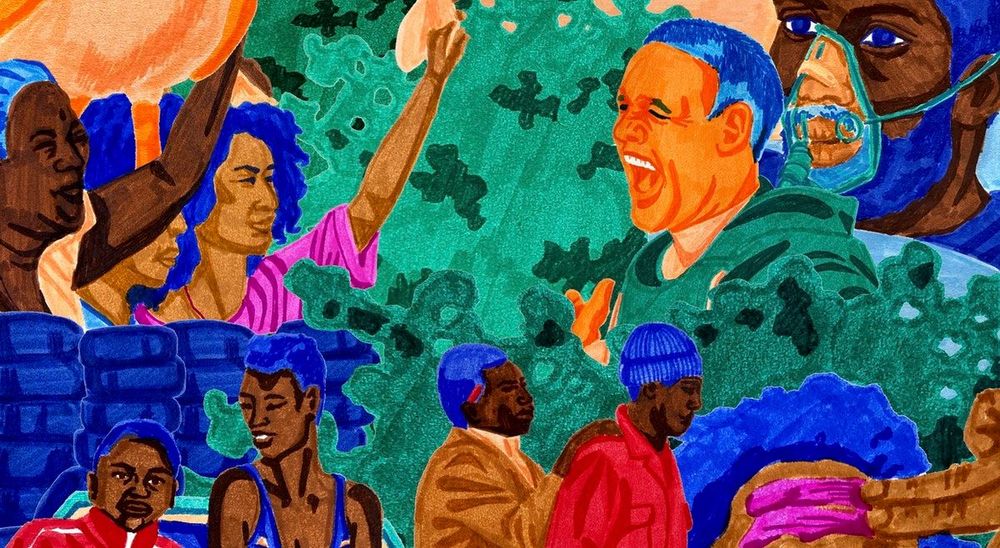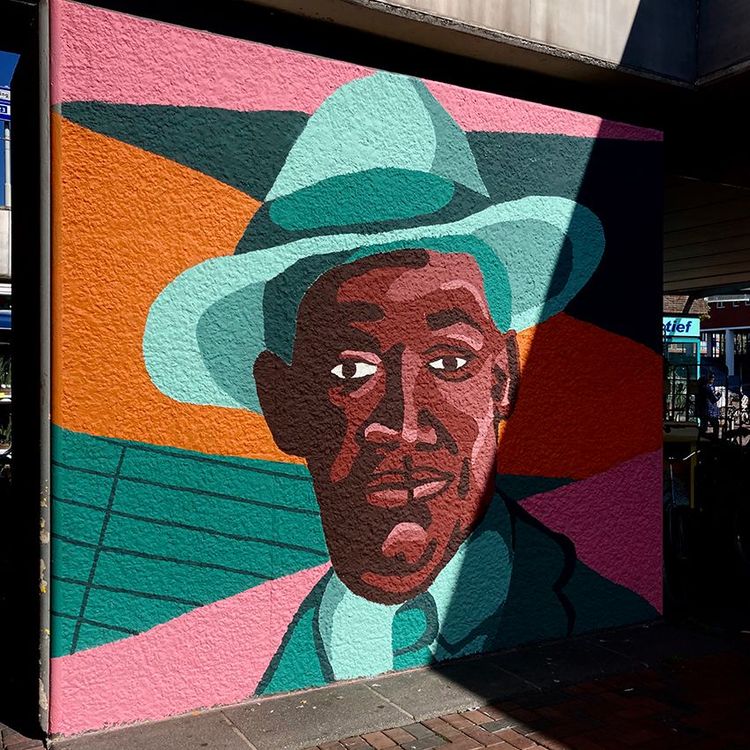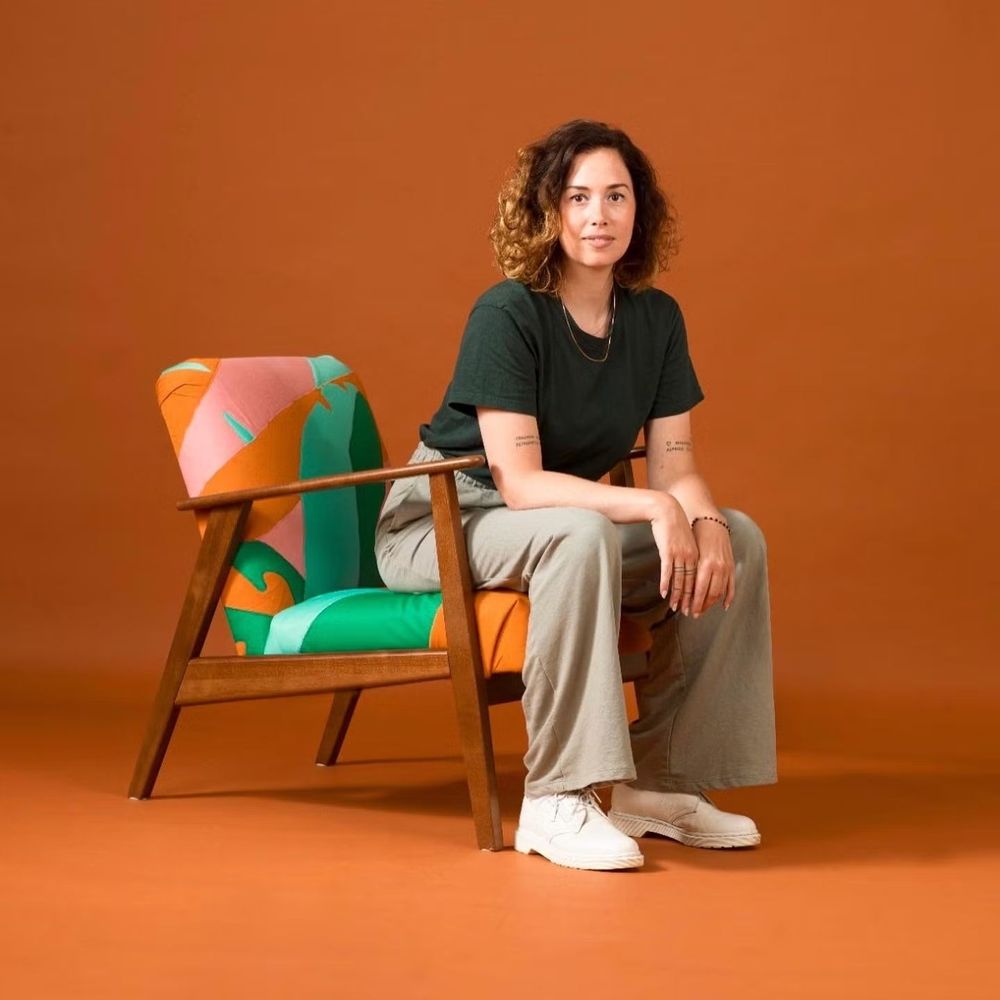HEDY TJIN: THE WORLD AS A CANVAS
Hedy Tjin is an Amsterdam-based illustrator and designer. Since graduating from the Academy of Arts in Utrecht, Tjin has established herself as an artist with a trademark palette, an alluring aesthetic, and a strong social conscience. The world is Tjin's canvas, literally, for she designs anything from murals to books and from furniture to textiles.


Let's get right to it: What is creativity?
HT: "My definition of creativity is staying true to yourself, not paying too much attention to external influences, and not being too hard on yourself. You should never strive for perfection."
How does this apply to your way of working?
HT: "When I started out, I worked solely in black and white. Using pen and ink, I'd draw these lines over and over. But then, I switched to markers and started working with flat shapes instead of lines. I began making small drawings just for myself as a form of relaxation. There was no pressure, no specific purpose. I told myself these drawings couldn't fail; they were just for me. I had one rule: I had to continue drawing till the whole page was filled, and then I could decide whether to continue with it or not. This shift allowed me to become a more relaxed type of illustrator. Ultimately, I let go of the strict pursuit of naturalism, which felt right."

Changing your medium of choice is quite a big step.
HT: "It definitely was a significant change. I had bought a small set of markers and a sketchbook and just began making simple drawings, taking it step by step. I took the markers everywhere: on holiday, to the beach. The thing is, I can't sit still or lie in the sun for too long, so I would draw instead. It gradually became a kind of pastime. I didn't think this would eventually become my new style of illustration. It was just a hobby. Something I did in my spare time. It eventually became my new working method but that was a natural evolution. There was no preconceived plan."
By then, had you already graduated from the Academy of Arts, or was this pre-college?
HT: "I had already graduated by then. I recently looked it up: I graduated in 2009, and my first marker drawings date from 2016. I was already working as an illustrator by then and had clients who hired me specifically for my black-and-white line drawings. But then I started experimenting by adding color to my work."

Were you nervous about changing your style and possibly losing clients or work over it?
HT: "Not really. And that's partly because I took up a part-time job at around the same time. In the early years of my career, financial worries were a real thing. But by getting this job I created more room for creativity. I no longer felt the constant pressure to illustrate solely for money, which inspired me to really start doing my own thing."
They say you don't need money to be creative, but not having any money can be a significant block for creativity. Financial worries can undoubtedly affect your creativity, right?
HT: "Absolutely, because at the end of the day, you still need to pay your rent and cover your basic needs."
Collaboration is about giving and taking, compromising, and being open to new ideas during the creative process.
When did you start painting murals?
HT: "I spent a lot of time in Surinam, my father's country of birth. And over there I did quite a few murals, but I had never done one in The Netherlands. In Surinam, there's a culture of murals and advertising that I found fascinating. I even set up a collective with a friend there: we allowed young artists to paint murals on vacant buildings and old structures.
I painted my first 'Dutch' mural during the early days of the COVID pandemic. I was asked to do a mural but by then my style had changed significantly, so I had to find a way to translate my new style to match the mural's requirements. In the end, it all began with a drawing that I blew up onto the wall."

From murals to textiles: Again, it seems like a giant leap, but you seem to make the switch effortlessly.
HT: "I've always had a fascination for textiles. In fact, I used textiles in my graduation project in 2009 but didn't explore it much after that. When we were stuck at home due to COVID, I was painting in my studio, and that's when the idea hit me. I thought: ‘Why not transform my paintings into applied textile pieces?’ I started cutting the shapes from the fabric and making collages to create textile wall hangings. That's how it all began."
“I've learned that collaborating with other people gives you fresh perspectives.”
That's creativity at work, right there. Making do with what you've got. Finding inspiration in limitations and restrictions.
HT: "Exactly. Restrictions can be inspiring, although that's something I realized later in my working life. In college, collaborating was challenging for me because I'd feel like, 'I have an idea, but I might not connect with the other person's idea.' Since then, I've learned that collaborating with other people gives you fresh perspectives. You may not initially resonate with their ideas, but when you work together, you find ways to make it cohesive and exciting for everyone involved."

How do you go about collaborating?
HT: "For me, it's about working with people whose work I already adore. That means I can't always collaborate with everyone: the project needs to feel right. For example, I collaborated with Brian Elstak on a book. We both admired each other's style. However, we still needed to ensure the book had a unified look. So, I suggested sticking to a specific color palette to create cohesiveness; fortunately, Brian agreed. Collaboration is about giving and taking, compromising, and being open to new ideas during the creative process. Collaborations allow me to evolve as an illustrator and be open to new possibilities."
Speaking of collaborations, what does a collab look like when the other party is a big company, like the work you did for IKEA? Usually, the one who pays has the final say.
HT : "Well, in the case of the Ikea collab: the creative brief allowed for a lot of freedom. Ikea wanted to upcycle furniture, and I wanted to work with textiles, so it was a project where everyone could contribute in their own way with ideas and interpretations. Collaborating with companies can sometimes mean your work reaches a broader audience, and yes, it may become more commercialized. However, I've seen that people who are genuinely passionate about their art and craft will find their way. You need to have endurance and focus to sustain yourself in this world. It's not about just getting a continuous stream of commissions. It's about being genuinely passionate about what you do and staying committed to it."

You've developed a very distinctive and recognizable style. It must be challenging seeing others copying or trying to imitate it. How do you deal with that?
HT: "I believe that when you stay true to yourself, you'll always be unique. I have my own techniques, color palettes, and themes that are specific to me. It's nearly impossible for someone to copy all three aspects. Also, if someone chooses to copy my style, that's on them. I might not like it, but ultimately, it's their choice. Also, I think my interests and my world are quite specific, making it challenging, if not impossible, to replicate."
Find your passion, stay true to yourself, and don't be afraid to explore and evolve your art.
Any words of wisdom for young artists who are just starting out?
HT: "Find your passion, stay true to yourself, and don't be afraid to explore and evolve your art. Be patient, as it takes time and perseverance to establish yourself in the art world. Also, drawing inspiration from everyday life and staying connected with the society around you is extremely valuable. Spending time in places like Suriname allows me to step away from the fast-paced art world and be more relaxed and contemplative. Drawing inspiration from ordinary things, like the streets or daily life, keeps me grounded and connected to the broader society rather than confined in the art bubble. It's important to have that balance."
Disclaimer: This interview was conducted at the Illustratie Biënnale Haarlem, the illustration and graphic art festival. We’re proud to call the Biennale one of our partners. For more articles and design challenges check back soon.



Comments